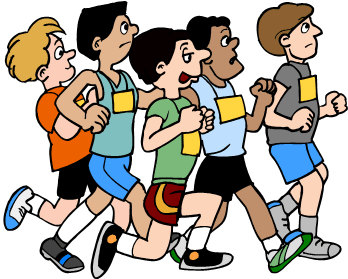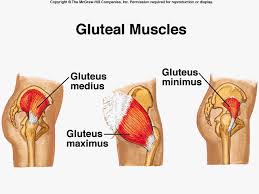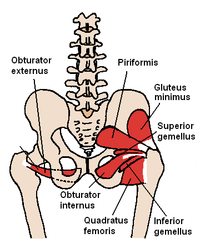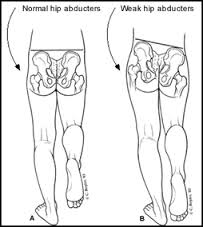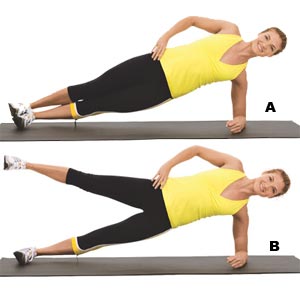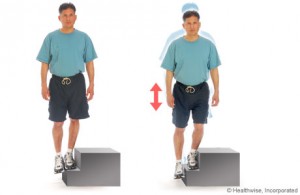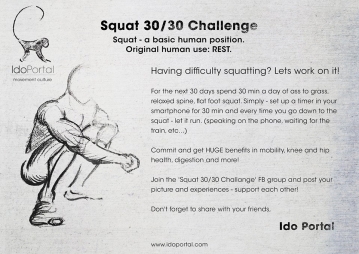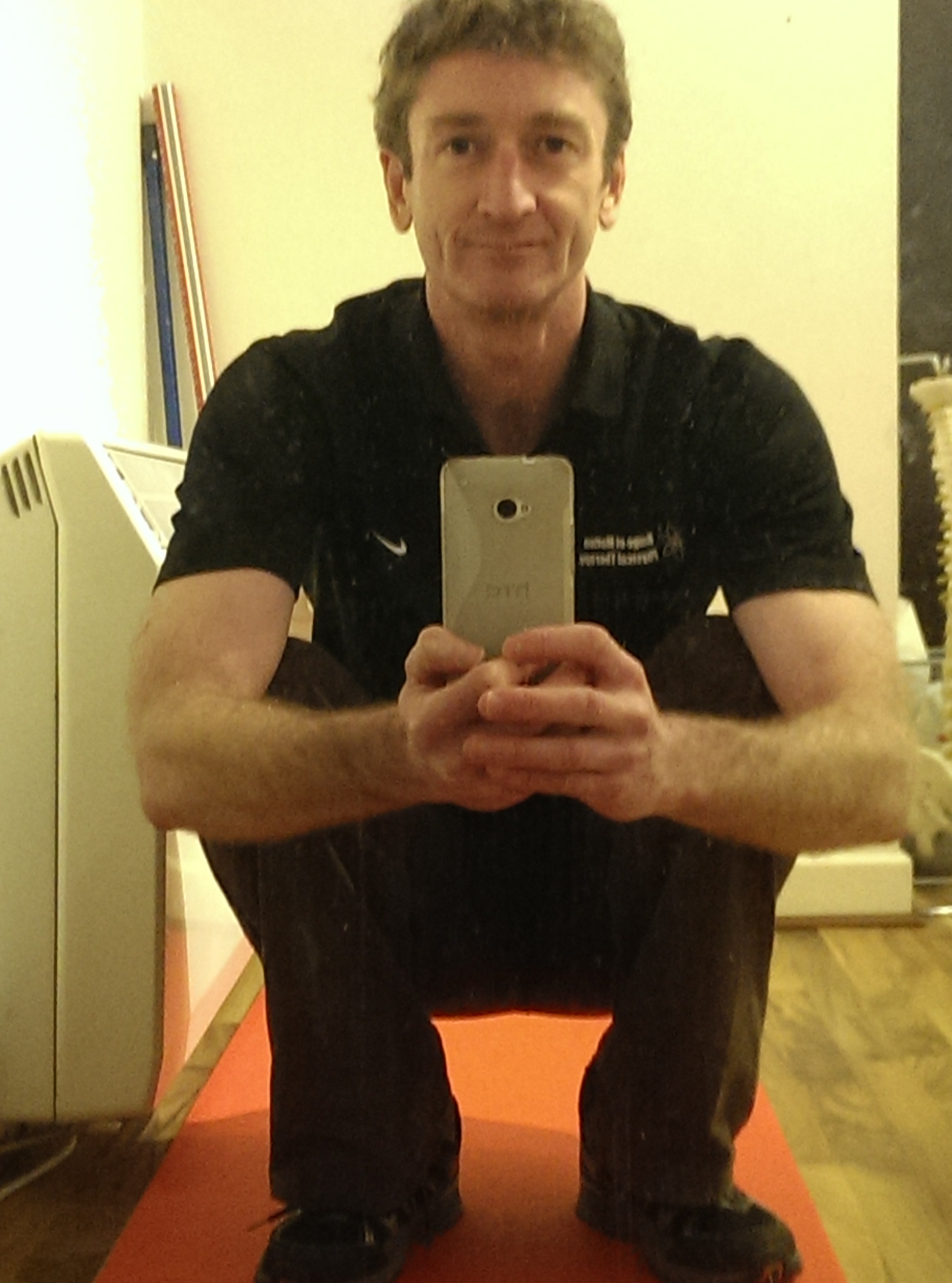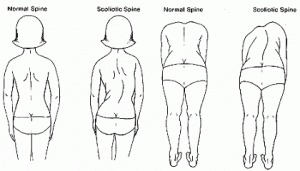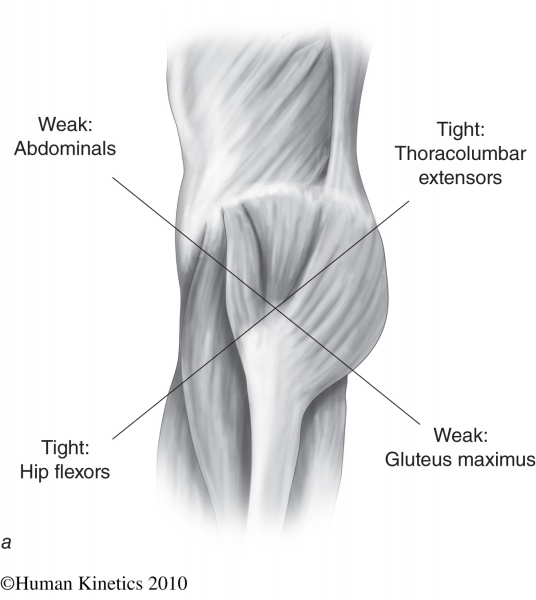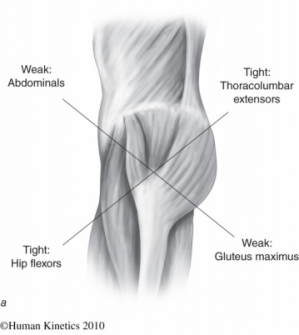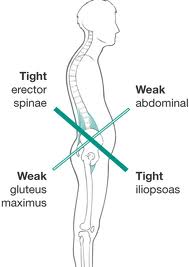Marathon Running Injury
Running Injuries at Range of Motion Physical Therapy Dublin
So I am finally catching up with myself after a very busy October, I reckon I did over 30 sports massages in the two weeks leading up to the marathon. Again well done to all of those who completed the marathon and some great times.
I am especially happy with one particularly client who came to me from the local running club. I had seen her with about 5 weeks to go before the marathon for a sports massage and her training was going well for her, building it steady. I received a call from her the following week, she was in a distressed state having injured her lower leg during a training session.
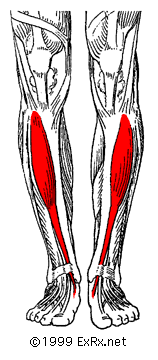 During the assessment it was obvious she had strained her Tibialis Anterior Muscle (Muscle running down the Shin), she reluctantly admitted to trying to do some bare foot running during one of her training runs… Thankfully she has learnt the golden rule when training for a marathon, do not change anything in the final phase of your training plan, be it your foot wear or technique.
During the assessment it was obvious she had strained her Tibialis Anterior Muscle (Muscle running down the Shin), she reluctantly admitted to trying to do some bare foot running during one of her training runs… Thankfully she has learnt the golden rule when training for a marathon, do not change anything in the final phase of your training plan, be it your foot wear or technique.
In terms of helping her recover from her injury we were under a bit of time pressure, or should I say I was…. Initially it was important for me to manage my clients stress levels and expectations, what is done is done. My first goal was to ensure she stops her long runs and understands that she now needs to focus on resolving her injury.
The simple protocol we followed was initial Rest and Ice with gentle stretching of the muscles of the shin, this was done by having her kneel on the floor with her feet pointing behind her while she sat back on her feet.
Over the cousre of a week the swelling and pain eased so we introduced some thera-band exercises, adding some resisted ankle dorsi-flexion to strengthen the muscle. This was monitored daily and as her pain decreased further we started a walk – run program to prepare her injured muscle to getting back to running.
After approximately 2 half weeks of the walk run program she was back running for 30 minutes slow and easy and feeling much more confident of her chances of making the marathon. On the final days leading up the marathon there was no pain or swelling, we decided she would start the marathon and see how it goes. However if she feels any pain she was to pull up for fear of creating a more serious injury.
I was delighted to hear that her injury held up for the entire marathon and she completed the race without having to stop. I think she has learnt some really good lessons and gained some great experience and is looking forward to her next marathon.
Please contact Range of Motion Physical Therapy Dublin for some great advice on how to manage running injuries or if you are just looking for so on going maintenance sports massages.
Best Exercises to Strengthen and Stabilise the Glute Muscles
Strengthening Exercises for the Glute Muscles Range of Motion Physical Therapy Dublin
The group of gluteal muscles are made up of the Glute Maximus, Glute Medius and Glute Minimus, collectively these group of muscles Abduct, Extend, Internally & Externally Rotate the hip. The glutes also assist with some additional movements e.g. Trunk Extension, hip flexion in conjunction with the hip flexor, to name a few.
There are also a deeper set of muscles under the larger gluteals, the hip rotators. The hip rotators can also be referred to as the hip stabilisers (like the rotator cuff of the shoulder), the larger gluteal muscles work to move the hip while the smaller hip rotator group help to stabilise the hip during movement.
One of the main functions of the gluteal muscles is to stabilise the hip as we walk, run and climb stairs. This is done by contracting the gluteal muscles on our stance leg, which works against gravity and maintains a level pelvis, as the opposite leg swings forward.
In the case of someone with weak or misfiring glutes, they may have a trendelemburg gait, or waddle as they walk. This is normally more prevalent in elderly people who have to hike their hip up as they walk to ensure they do not trip or stumble.
Any weakness, muscle imbalance or inhibition of the gluteal muscles can cause a number of additional acute or chronic issues:
- Hamstring Strain – glute maximus work in conjunction with hamstrings to extend the hip, any imbalance can lead to over loading the hamstrings
- Low Back Pain – glute maximus works with low back extensors when lifting, any misfiring of the glutes can over load the low back extensors
- Anterior Hip or Knee Pain – weak glutes can cause increased internal rotation of the leg causing a patella tracking problem. While also causing additional hip wear and tear during hip extension.
- Lower Body Misalignment – As above weak glutes can cause increased internal rotation of the leg leading to ankle pronation and knee valgus.
By activating the gluteal muscles and strengthening them it will help to correct the muscle firing patterns and enhance the strength and performance of the group of muscles.
The following exercises have been found during EMG studies to be the best all round exercises to isolate and strengthen the gluteal muscles.
Based on EMG studies the following exercises worked the individual glute muscles as below:
Glute Medius: Glute Maximus:
- Side Plank Single Leg Deadlift
- Unilateral Bridge Single Leg Squat
- Lateral Step Up Front Plank with Hip Extension
- Superman Superman
- Side lying Hip Abduction
Of the studies the 3 best all round exercises for the Glute Maximus & Medius are:
Front Plank with Hip Extension: try to build up the time you can hold this position, maybe start with 10 sec in front plank, extend left hip for 5 secs and repeat with the right.
Side Plank with Hip Abduction: try to build up the time you can hold this position, maybe start with 10 sec in side plank, as you get better abduct left hip for 5 secs and repeat with the right side.
And finally a single leg squat, there are a number of ways to do this exercise depending on your ability and injury. While performing this exercise it is important to ensure you are activating (turning on) your glute muscles.
I instruct clients to do this exercise on the last step of the stairs and once they have mastered activating their glute muscles and they are squatting correctly they can work their way into a deeper squat.
There are a number of glute strengthening exercises that can be done, those above maybe to difficult for you to start with. I have included some easier glute activation exercises in the video above and progress to the more advanced exercises.
If you are suffering from Knee Pain, Hip Pain or Low back pain, please contact me for a consultation and treatment at Range of Motion Physical Therapy Dublin.
Range of Motion Physical Therapy Newsletter March 14
Sugar and Heart Disease Throughout January I have heard a number of debates and read a number of articles on the dangers of sugary foods in our diets and how sugar is causing heart disease through inflammation.
In addition to sugar, Omega 6 fats are also a cause of inflammation within the body and these can be found in oils made of corn and soybean and processed foods made with these oils. We hear more and more of how governments are trying to introduce sugar taxes on manufacturers and clearer labelling of how much sugar in is the foods we eat.Everything I read or hear talks of cutting down our daily sugar in take by eating less processed foods, and look to eat more raw fruit and vegetables. I have attached an article written by a leading Heart Surgeon that gives a simple explanation as to how sugar is effecting our bodies,
“There is but one answer to quieting inflammation, and that is returning to foods closer to their natural state. To build muscle, eat more protein. Choose carbohydrates that are very complex such as colourful fruits and vegetables.”
Read more heart-surgeon-declares-really-causes-heart-illness
This article also give more details on High Fat Low Card diets and what are Good Fats and Bad Fats:
Read more: the top 9 lies, myths and misconceptions about dietary fat and cholesterol.
30/30 Squat ChallengeDo you have difficulty squatting or touching your toes, Squatting is one of the prime movements we do as humans, as children we squat naturally to pick things up etc. As we grow older bad habits, prolonged sitting on chairs and at desks causes tightness throughout our lower bodies limiting our movement.
Why not try this challenge to help regain a basic human function and with it improve mobility, health, digestion and more and more….try doing some belly breathing in the position, will help with core strength and alignment of the hips and lower body!! Join us for the 30/30 Squat Challenge - https://www.facebook.com/groups/30squat/Take some pics of your before and 30 days after squat position, and see if there are any changes and improvements, and see does it get easier to hold the position over.
What is Scoliosis?
What is Scoliosis? Range of Motion Physical Therapy Dublin
Scoliosis is defined as a medical condition in which a person’s spine is curved from side to side, curvature is normally found in the Lumbar and thoracic spine. Scoliosis may be structural or functional.
Structural scoliosis curves do not straighten during forward bending or side bending into the curve of the spine. There will be a lumber bulge or rib hump with forward bending when a structural scoliosis is present.

A functional (idiopathic) scoliosis can be caused by muscle imbalance, poor posture or a leg length discrepancy. This type of scoliosis generally straightens on forward bending or side bending into the curve.
Acute scoliosis is when there is facet joint impingement thus causing both muscle spasm and restriction in spinal mobility. The body will shift weight to the opposite side of the impingement due to pain, giving the impression of a curvature of the spine.
Functional Scoliosos can present in a number of ways, which depends on how many curves appear throughout the spine and angle of the pelvis.
When treating a right thoracic scoliosis as depicted, it is important to understand that the thoracic spine is side bending left and rotating back to the right, while the lower lumbers are side bending left and rotated right. In addition to this the left side of the pelvis is lower causing a longer leg length on the left side.
 In an effort to resolve this particular deformity it is important to look to de rotate the spine and look to level the pelvis, this can be done as follows:
In an effort to resolve this particular deformity it is important to look to de rotate the spine and look to level the pelvis, this can be done as follows:
- Stretch the Left side thoracic spine by side bending to the right, while also strengthening the muscles of the right side for thoracic spine.
- By also rotating the rib cage left it will de rotate the right rotated thoracic spine, and again strengthen the muscles that will help maintain this position.
- To correct the lower lumbers it will help to level of the pelvis. The pelvis can be levelled by placing a book under the left foot.
- The lumbers can be further de rotated by moving the right foot forward.
- Again there are some easy exercises that can be done to help create long term change.
In addition to prescribing exercises and stretches it would also be important to release out the tight muscles along the length of the spine and around the pelvis, to ensure the exercise can correct the Scoliosis over time.
I have attached a video that gives some more information about Functional Scoliosis and how some stretches and exercises can help correct the Scoliosis.
How to correct Scoliosis with Exercise and Stretching.
If you would like to learn more about this condition or to book a consultation please contact me at Range of Motion Physical Therapy.
Hip Pain due to Poor Hip Mobility
Hip Pain and Hip Mobility Range of Motion Physical Therapy Dublin
As it is the end of a year and the start of another, I was thinking back over what I learnt in 2013. One area I have done a lot of research and study on is the lower body, and specifically the Hip. With this in mind I would like to share a few simple hip mobilisation exercises that can be done to help prevent or improve poor hip mobility. I have been using these exercises with clients with great results.
 I have been prescribing these exercises to clients that have hip alignment issues and been complaining of hip or low back pain. In the majority of cases the hip alignment issue is a result of Lower Crossed Syndrome (LCS). LCS can cause a reduction in hip mobility leading to compensatory patterns, possibly causing the aforementioned hip and low back pain.
I have been prescribing these exercises to clients that have hip alignment issues and been complaining of hip or low back pain. In the majority of cases the hip alignment issue is a result of Lower Crossed Syndrome (LCS). LCS can cause a reduction in hip mobility leading to compensatory patterns, possibly causing the aforementioned hip and low back pain.
Lower crossed syndrome is the result of muscles strength imbalances around the hips and lower body. These imbalances can occur due to muscles being in a constantly shortened and or lengthened position in relation to each other.
When treating this issue the first objective is to correct the alignment of the hip and improve the mobility of the hip. This is done through a combination of manual therapy techniques to turn on, i.e. strengthen weak muscles, and turn off tight muscles. These changes are then maintained by giving a client some corrective exercises to be done at home.
Hip mobilisation exercises are one type of corrective exercise that will help with the re aligning of the hip, these exercises can also be done as a general exercises to keep your hips healthy and prevent restrictions developing.
Below are a couple of great home exercises I use to help increase hip mobility, thanks to Mike Reinold:
The above video demonstrates how to do some pivots, which can be done as a warm up exercise, you can gauge how fast you do them and the must be pain free.
I have also included some hip mobilisation stretches for the external rotators, hip flexors and TFL/IT band.
If you are suffering from Hip pain or Low Back pain, and would like to make an appointment for an assessment and treatment please contact me at Range of Motion Physical Therapy Dublin.
Range of Motion Physical Therapy Newsletter January 14
New Years Resolutions:It’s that time of the year again, time for New Year’s resolutions! A New Year, a fresh start and over one week in and how many of us have already broken our New Years resolutions?The answer is: most of us.
But there’s no shame in it, we’re all in it together. New Year’s resolutions are exactly the wrong way to change our behaviour. It makes no sense to try to quit smoking and lose weight at the same time, instead it is best to set out a couple of targets throughout the year and focus one at a time.
For those of your who have set yourselves a new challenge to begin running, you can get some help from the professionals, my local running club Lucan Harriers AC are starting a Fit 4 Life run program for beginners. Check out their Facebook page for details on how to sign up, programme starts this Monday 13th January. Lucan Harriers Fit 4 Life
If you decide to start a fitness program do not forget to have a regular sports massage with Range of Motion Physical Therapy, to help with muscle soreness and tightness. It is always best to have a treatment before any issues worsen.

Hip Pain due to Poor Hip MobilityAs it is the end of a year and the start of another, I was thinking back over what I learnt in 2013. One area I have done a lot of research and study on is the lower body, and specifically the Hip. With this in mind I would like to share a few simple hip mobilisation exercises that can be done to help prevent or improve poor hip mobility. I have been using these exercises with clients with great results. Hip Pain due to Poor Hip Mobility
Sports Hernia
At Range of Motion Physical Therapy Lucan I work with a number of different sports clubs and teams, such as GAA, Rugby and athletics. As a result I see a number of athletes with what appears to be a sports hernia!!
Below I outline what is a sports hernia, the symptoms and what is the best course of action should you suspect you have a sports hernia.
What is a Sports hernia?
A sports hernia occurs when there is a weakening of the muscles or tendons of the lower abdominal wall. This part of the abdomen is the same region where an inguinal hernia occurs, called the inguinal canal. When an inguinal hernia occurs there is sufficient weakening of the abdominal wall to allow a pouch, the hernia, to be felt. In the case of a sports hernia, the problem is due to a weakening in the same abdominal wall muscles, but there is no palpable hernia. This can make a sports hernia difficult to diagnose.
The problem with the abdominal wall in people with a sports hernia is not a muscle strength issue. It is more of a muscle imbalance issue between abdominal muscles and leg muscles inserting on the pubic bone. As you can image leg muscles are relatively more powerful than the core muscles, it is this imbalance along with participating in certain sports can contribute to sports the hernia forming.
What are the symptoms of a sports hernia?
A sports hernia typically begins with a slow onset of aching pain in the lower abdominal region. Symptoms may include:
Pain in the lower abdomen
Pain in the groin
Pain in the testicle (in males)
The symptoms are exacerbated with activities such as running, changing direction, and bending forward. Clients may also have increased symptoms when coughing or sneezing, it is important not to ignore these symptoms as the hernia can become worse. Sports hernias are found in many types of athletes such as GAA, Rugby and soccer players.
How is a sports hernia diagnosed?
As I mentioned earlier, diagnosis of a sports hernia can be difficult in the early stages. A sports hernia is determined based on the combination of the clients history, physical examination, and diagnostic tests. MRI scans have also become more common in looking for signs of a sports hernia.
What is the treatment of a sports hernia?
The initial treatment of a sports hernia is always conservative in the hopes that the symptoms will resolve. The type of conservative treatment advised is a period of complete rest, followed by 4-6 weeks of physical therapy.
Physical therapy for sports hernia focuses on programme incorporating strengthening of the core muscles, while also stretching the low abdominal and lower extremity muscles and tendons.
Range of Motion Physical Therapy Newsletter December 13
Lower-cross syndrome is the term for a pattern of muscular imbalance around the lower back and hips. There are two types A & B with the more common type, Type A depicted above.
LCS is tightness of the thoraco-lumbar extensors (Erector Spinea) in the lower back, rectus femoris (Quad) and the iliopsoas (Hip Flexor). The hip flexor attaches from the lower lumbar vertebrae and passes to the front of the hip.
This pattern of tightness is contrasted by weakness of the abdominal muscles in particular the transversus abdominus and the gluteal muscles of the bum.
This muscle imbalance can create joint dysfunction at points within the spine and it also create postural changes. Areas affected in the spine are the lower lumbar joints such as L4-L5, L5-S1 segments and SI joints of the pelvis and the hip joint.
Some of the symptoms can be poor postural pattern, low back pain, hip joint dysfunction and restricted hamstrings, to name a few. It is important to look at a clients history, people who sit for long periods of time can suffer from shorten hip flexors and weak abdominal muscles, similarly those that cycle a lot may also suffer from tight hip flexors due to overuse and lack of stretching.
The most common result of LCS are postural changes such as anterior pelvic tilt, where the pelvis tilts forward, increased lumbar lordosis (the spinal curve of your low back), lateral lumbar shift, lateral leg rotation (outwards rotation), and knee hyperextension.
Once a group of muscles become tight and short, the opposite muscle groups become weakened. This starts a negative feedback cycle that with no intervention can compound the muscle imbalance. Treatment will focus on releasing out the tight muscle groups and strengthening the weaker muscles, this is done through hands on treatment techniques and corrective strengthening exercises to restore the muscle imbalance and postural issues.
If you think you are suffering from Lower Cross Syndrome contact Range of Motion Physical Therapy for an assessment.

Treat someone special to a Christmas Gift Voucher from Range of Motion Physical Therapy. A great Christmas present idea for someone in your life that does a lot of training or enjoys a good deep tissue or sports massage.
Gift Vouchers are available for Christmas and other special occasions, contact me should you wish to place an order!!
Can Fallen Arches Cause Knee Pain?
Can fallen Arches cause Knee Pain?….in short, Yes, fallen arches can cause knee pain, along with hip, pelvis and low back pain. To understand how this occurs we first need to look at how we walk or the gait cycle.
During the gait cycle our legs pass through the “stance phase”, this is where our foot strikes the ground and stabilises the stance foot, leg and hip to allow the other leg pass through the “swing phase” and so on.
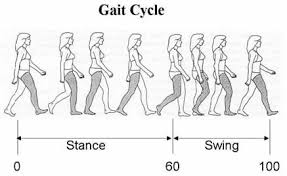
During the stance phase the foot plants itself on the ground creating a stable surface, this is done by using the small intrinsic muscles of the foot, lower leg muscles and other elements of the ankle, foot and hip.
One of the dysfunctions that can effect the stability of the foot is Fallen Arches or a weakness in the small intrinsic muscles of the foot thus allowing the foot to over- pronate during the gait cycle .
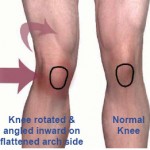 When the arch of your foot weakens and collapses (over-pronates) as the foot strikes the ground the lower part of your leg (tibia or shin bone) rotates inwards. As the lower limb rotates inwards this puts additional pressure on the knee structure, thus causing misalignment of the knee during the gait cycle. If you multiple this movement pattern by a few thousands steps a day or load the knee further by running on this pattern…yes you will have knee pain…sooner or later. As mentioned, in addition to knee pain, the hip, pelvis and lower back can also be affected by fallen arches causing pain in these areas.
When the arch of your foot weakens and collapses (over-pronates) as the foot strikes the ground the lower part of your leg (tibia or shin bone) rotates inwards. As the lower limb rotates inwards this puts additional pressure on the knee structure, thus causing misalignment of the knee during the gait cycle. If you multiple this movement pattern by a few thousands steps a day or load the knee further by running on this pattern…yes you will have knee pain…sooner or later. As mentioned, in addition to knee pain, the hip, pelvis and lower back can also be affected by fallen arches causing pain in these areas.
As a Physical Therapist there are a couple of options I make available to clients to help resolve this issue. One factor to consider with Fallen Arches is that they can be heredity and as result of this an exercise program may not be as effective on the weakned muscles. For these clients I stock a custom designed off the shelf Orthotic to help support the arches and correct their movement pattern, the Orthotic is to be used in conjunction with foot strengthening exercises.
For other clients I will always look to work with them to strengthen their intrinsic foot muscles to ensure they can create the stability need to prevent over-pronation. This is done through a series of soft tissue and foot mobilisations techniques, which are support by foot straightening exercises, such as picking up a pen with your toes.
I also explain the tripod position of the foot to ensure clients understand what biomechanics are taking place and how they can help themselves to correct over-pronantion on a more permanent basis without the use of expensive ortothics.
Tripod Ex:
If you have foot, knee, hip or low back pain or fallen arches please contact Range of Motion Physical Therapy for an appointment.
Range of Motion Physical Therapy Newsletter November 13
Happy Halloween to one and all!!!!!I forgot how busy this time of the year is on the run up to the marathon, thankfully I was able to rest on bank Holiday Monday and recover after the last 2 weeks of deep tissue massages and trying to work a few miracles on clients with niggles…. I would like to take this opportunity to wish those that successfully completed the Marathon, I think all the hard work was done by getting yourselves to start line injury free. I am glad to say I helped a number of clients to recover from their overuse injuries in time for the marathon.
I have been asked by a few clients as to what they should do now to help ease the pain and recover quickly.
As the adrenaline and euphoria wears off the pain kicks in. You must remember you have really put your legs and body through a very intense workout, as a result some of you are finding it hard to walk others are finding it hard to get up and down the stairs.
Below are a few tips of what you should be doing over the next few days and weeks:
1. Keep Moving - Do your best to avoid being stationary other than sleeping. Light walking, an easy dip in the pool or a short spin on an exercise bike in the gym. Avoid any impact exercise i.e. more running, easy exercise will help your muscles flush out the toxins and after-effects of the race. Frequent rest will be needed, but avoid total rest as you will cease up.
2. Continue to Eat Healthy - You will have been watching what you eat on the run up to the marathon and the same applies now, it is important to re fuel. A trick or treat or two is OK, try to eat sensibly for the week, good mix of protein and carbs to help repair damaged muscles and replenish your energy stores.
3. Massage - Look to get a light massage on the legs or self massage, look to have your calves, feet, hamstrings, glutes and quads massage and any trigger points eased out and loosened up. Do not go to hard as you will just be feeding into the existing muscle damage, drink plenty of water to help flush out the toxins.
4. Getting back to running - allow your body fully recover and is pain free, begin by doing a some short easy slow runs, to test how the body is feeling and recovering. If your body is still tired and stiff try some simple Walk/Run sessions, walking for 5 minutes running for 2 minutes and gradually reduce your walking time while increasing your run time and build it from there.
It wont be too long before you forget the pain and start thinking about your next marathon!!!
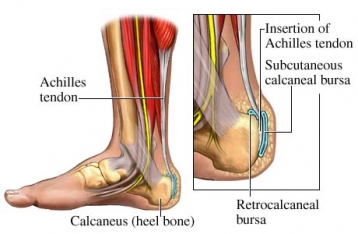
Achilles Tendinitis Prevention and Treatment Exercises:One of the over use injuries I had to treat on the run up to the marathon was Achilles Tendinitis as a result of tight calves, which was made worse by training through the injury. I have written a blog outlining some “go to” exercises on how to self treat Achilles Tendinitis and how to help prevent developing Achilles Tendinitis while training.
Achilles Tendinitis Prevention Blog:


